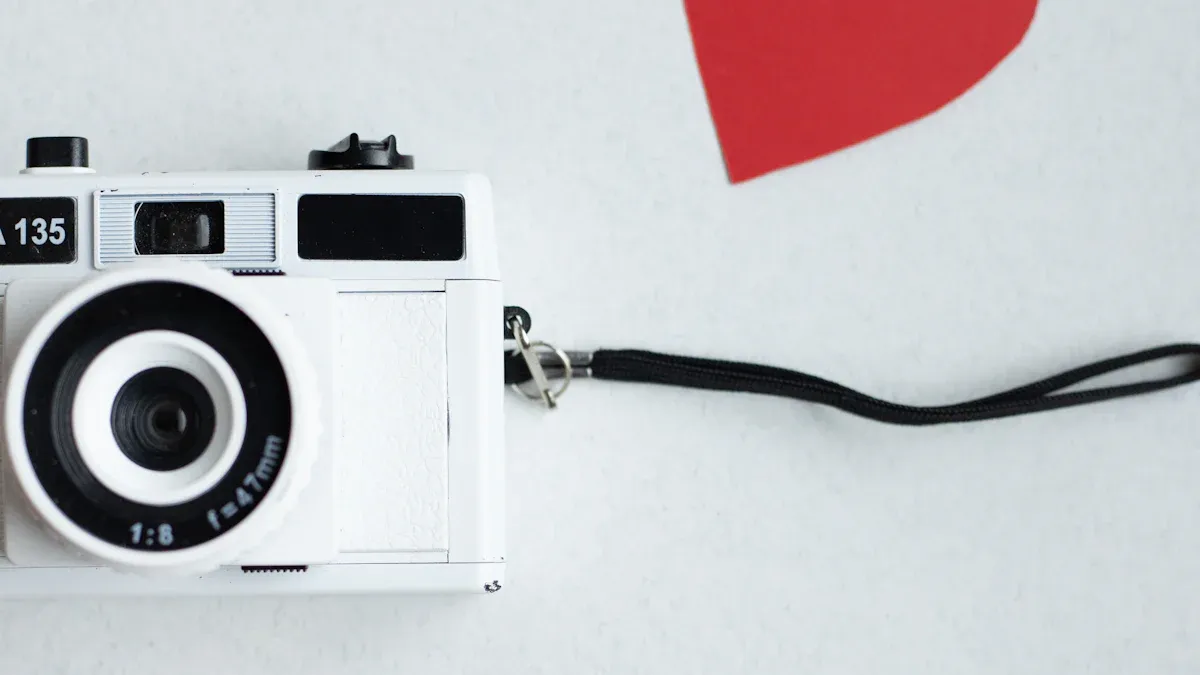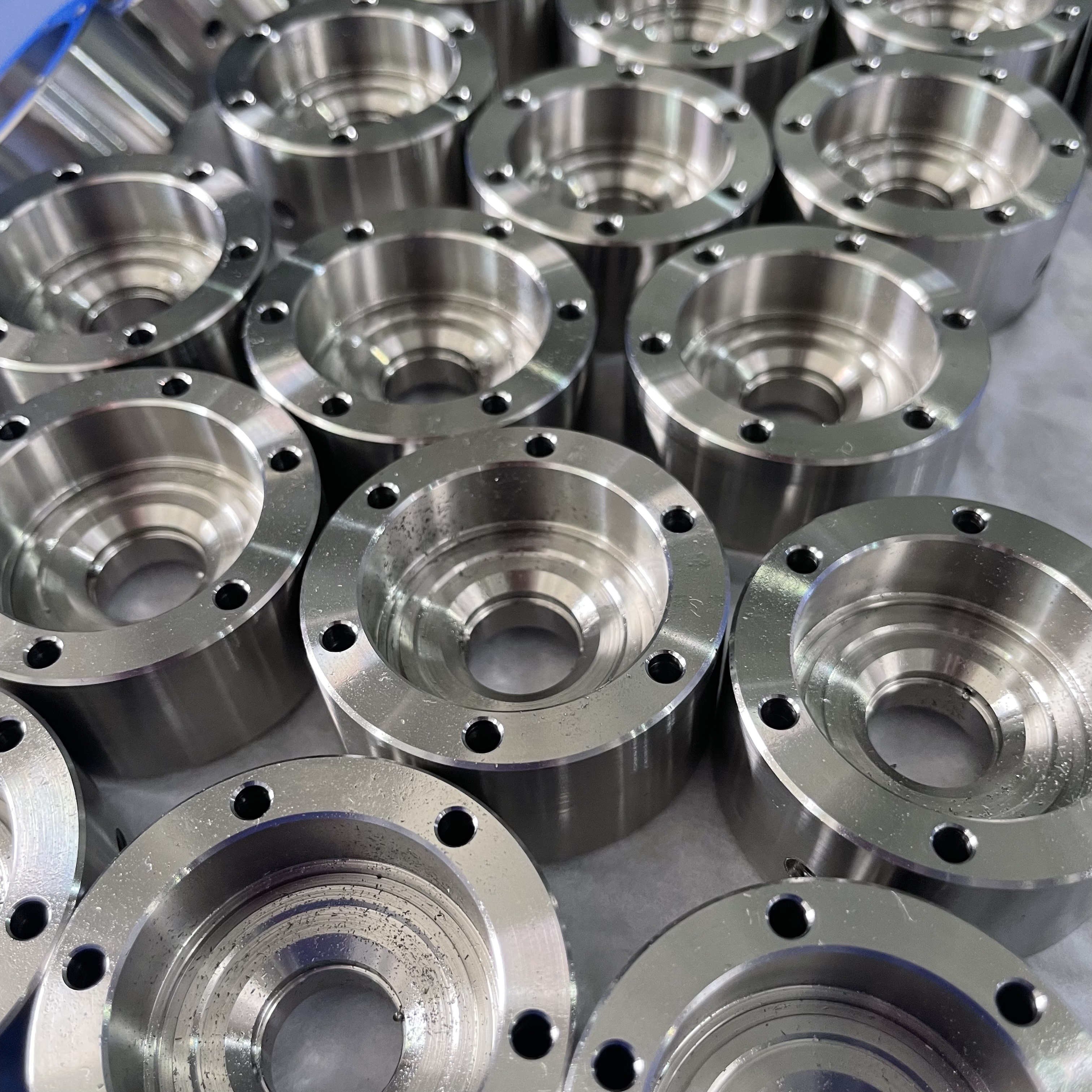What to Consider When Choosing the Right Material for Your Custom Robot Parts Project

Choosing the right material for your Custom Robot Parts can make or break your project. Materials impact performance, durability, and cost. Think about Tesla’s use of aluminum alloys to balance strength and weight or reinforced concrete in construction. These examples show how smart material choices ensure your robot performs as intended.
Key Takeaways
Know what your robot parts will do. This helps pick materials for support, movement, and looks.
Focus on strength and lasting use. Pick materials like aluminum or steel to handle pressure and stay strong.
Think about weight and balance. Light materials help robots move better and save energy. Make sure the weight is spread out evenly for steadiness.
Define the Purpose of Your Custom Robot Parts
When designing custom robot parts, understanding their purpose is the first step. Each part plays a unique role in your robot's overall functionality. Let’s break it down into three key areas.
Structural Support
Structural support is the backbone of any robot. It ensures stability and holds all components together. For this, you’ll want to choose materials that are strong, durable, and capable of withstanding stress. Metals like aluminum and steel are common choices because they provide excellent rigidity and heat resistance. Plastics such as ABS and polycarbonate are also popular for their lightweight and versatile properties. If you’re looking for something more advanced, composites like carbon fiber offer a great balance of strength and weight.
Here’s a quick list of materials often used for structural support:
ABS: Strong and rigid, ideal for frames.
Polycarbonate: Impact-resistant, great for sensor housings.
Nylon: Wear-resistant, perfect for gears and bearings.
Metals: Durable and heat-resistant, used for structural elements.
Mobility and Movement
Mobility is what brings your robot to life. The materials you choose for moving parts must be lightweight and wear-resistant. Nylon is a great option for gears and bearings due to its durability. Polyurethane works well for grippers because it’s flexible and shock-absorbent. These materials ensure smooth movement and reduce wear over time.
Aesthetic or Design Considerations
A robot’s appearance matters, especially in humanoid robotics or consumer-facing designs. Materials like lightweight plastics and metals can enhance both functionality and visual appeal. Flexible materials such as silicone and polymers are often used in soft robotics to mimic biological structures. This not only improves interaction with humans but also adds a modern, sleek look to your robot.
Key Factors to Consider for Custom Robot Parts
When selecting materials for your custom robot parts, you need to weigh several factors to ensure optimal performance and reliability. Let’s dive into the key considerations.
Durability and Strength
Durability and strength are critical for ensuring your robot withstands the demands of its environment. Materials like steel and aluminum are excellent for structural components due to their sturdiness. Plastics such as ABS and polycarbonate offer a balance of strength and weight, making them ideal for lighter applications. Here’s a quick comparison of commonly used materials in robotics:
Material | Properties | Applications |
|---|---|---|
ABS | Strength, impact resistance, rigidity | Structural components, robot frames, enclosures |
Polycarbonate | Transparent, durable, excellent impact resistance, high temperature resistance | Sensor housings, protective covers, casings |
Steel | Sturdy, ideal for harsh conditions | Robot structures |
Aluminum | Lighter than steel, rust-resistant, can corrode in wet environments | Robot exteriors |
Choosing the right material ensures your robot can handle stress without compromising safety or reliability.
Weight and Balance
Weight plays a huge role in your robot’s mobility and energy efficiency. Lightweight materials like aluminum and nylon are perfect for moving parts, as they reduce strain on motors and controllers. However, balance is just as important. Uneven weight distribution can affect stability and performance, especially in robots designed for precise tasks.
Cost and Budget
Material costs can vary widely. High-quality options like carbon fiber or titanium offer exceptional performance but come with higher manufacturing costs. On the other hand, plastics like polypropylene or polyethylene are cost-effective but may require more frequent replacements. Striking a balance between upfront costs and long-term reliability is key to staying within budget.
Manufacturing Feasibility
Not all materials are easy to work with. Additive manufacturing, such as 3D printing, has made it easier to create complex designs using soft materials like elastomers. However, traditional manufacturing methods like machining or molding are better suited for rigid materials like steel or hard plastics. Consider the compatibility of your chosen material with the manufacturing process to avoid delays or increased costs.
Environmental Conditions
Your robot’s environment can significantly impact material performance. High temperatures can cause electronic components to fail or lubricants to degrade. Moisture can lead to corrosion, especially in bearings, while dusty or toxic environments can reduce the lifespan of moving parts. For robots operating in extreme conditions, materials like silicone or Kevlar provide added protection.
Compatibility with Other Components
Finally, ensure the materials you choose are compatible with other components in your robot. For example, soft materials like polyurethane work well with flexible grippers, while rigid materials like steel are better suited for structural elements. Compatibility ensures seamless integration and prevents unnecessary wear or damage.
Common Material Options in Robotics

When it comes to robotics, the materials you choose can make all the difference. Let’s explore some of the most common options and how they fit into your custom robot parts project.
Metals (e.g., aluminum, steel, titanium)
Metals are a go-to choice for many robotics applications because of their strength and durability. Aluminum is lightweight and easy to machine, making it ideal for structural components. It doesn’t rust, but it can corrode in wet environments. Steel, on the other hand, is heavier but stronger, perfect for handling heavy loads. It’s also easier to weld than aluminum. Titanium stands out for its high strength and low density, making it a favorite for high-tech designs.
Quick Tip: While aluminum is more expensive than steel, its ease of machining can save you time and manufacturing costs.
Here’s a quick breakdown:
Aluminum: Lightweight, corrosion-resistant, but harder to weld.
Steel: Strong, affordable, but heavy and prone to rust without treatment.
Titanium: High strength-to-weight ratio, great for advanced robotics.
Plastics (e.g., ABS, polycarbonate, nylon)
Plastics are incredibly versatile and widely used in robotics. ABS is strong and rigid, making it perfect for structural components like frames and enclosures. Polycarbonate is known for its impact resistance and is often used for sensor housings and protective covers. Nylon is wear-resistant and works well for gears and bearings.
Plastic Type | Common Applications in Robotics |
|---|---|
ABS | Structural components, robot frames, enclosures |
Polycarbonate | Sensor housings, protective covers, casings |
Nylon | Gears, bearings, and other wear components |
These materials are lightweight and cost-effective, making them a smart choice for many designs.
Composites (e.g., carbon fiber, fiberglass)
Composites combine the best properties of multiple materials. Carbon fiber is lightweight yet incredibly strong, making it ideal for robots that need to move quickly or handle precise tasks. Fiberglass is another excellent option, offering durability and resistance to environmental factors like moisture and corrosion. These materials are often used in applications where weight reduction is critical without compromising strength.
Did You Know? Carbon fiber composites are commonly used in drones and robotic arms due to their high strength-to-weight ratio.
Advanced Materials (e.g., ceramics, wood, high-strength alloys)
Advanced materials are paving the way for cutting-edge robotics. Technical ceramics excel in extreme environments, offering heat resistance and mechanical strength. High-strength alloys are perfect for structural components that face significant stress. Titanium and stainless steel are also popular for their corrosion resistance and durability.
Here are some examples:
Technical Ceramics: Ideal for high-temperature applications.
High-Strength Alloys: Durable under stress, great for structural parts.
Carbon Fiber Composites: Lightweight and strong, perfect for precision robotics.
These new materials for robotics are helping engineers push the boundaries of what robots can do.
Testing and Prototyping for Custom Robot Parts

Importance of Prototyping
Prototyping is a crucial step in the robot selection process. It allows you to test your custom robot parts before committing to full-scale production. Why is this so important? Let’s break it down:
Risk Mitigation: Prototypes help you catch design flaws early, saving time and money.
Iterative Design Improvement: You can tweak functionality without worrying about aesthetics.
Accelerate Development: Real-world testing speeds up the process and reduces costs.
User Feedback: Prototypes let you gather insights from users, leading to smarter designs.
By prototyping, you ensure your robot performs as intended, whether it’s for soft robotics or industrial applications. It’s a smart way to refine your design and avoid costly mistakes.
Methods for Testing Material Performance
Testing materials is essential to ensure they meet the demands of your robot. Start by evaluating each material’s strength, flexibility, and durability. For soft robotics, focus on how materials like silicone or polymers handle stress and deformation. Use these methods to test performance:
Stress Testing: Simulate real-world conditions to see how materials hold up under pressure.
Environmental Testing: Expose materials to heat, moisture, or corrosive environments to check their resilience.
Wear and Tear Analysis: Measure how materials degrade over time, especially in moving parts.
These tests help you choose materials that align with your robot’s purpose and environment. For example, soft-bodied robots need materials that can bend and stretch without breaking.
Iterating Based on Test Results
Testing doesn’t stop at the material level. It’s an ongoing process that improves your robot’s design. Here’s how you can iterate effectively:
Test each component individually to identify issues early.
Add subsystems one at a time, treating failures as learning opportunities.
Use real-world data to refine your design and ensure it’s robust.
This iterative approach ensures your robot is ready for its intended applications. Whether you’re building a controller for soft robotics or designing sustainable technologies, testing and refining will lead to better results.
Choosing the right material is vital for your robot design. It impacts durability, weight, and cost. Keep these factors in mind:
Flexibility: Elastomers and polymers improve movement.
Durability: High-strength alloys handle stress.
Lightweight: Composites reduce weight.
Energy Efficiency: Low-friction materials save energy.
Innovations like self-healing materials and conductive polymers are reshaping robotics, offering sustainable solutions and smarter designs.
Prototyping ensures your material choice aligns with project needs. It identifies flaws early, saves costs, and improves user experience. Testing also helps you meet sustainability goals, making your robot design eco-friendly and efficient.
FAQ
What is the best material for lightweight robot parts?
Aluminum and carbon fiber are excellent choices. They’re strong, lightweight, and perfect for improving mobility and energy efficiency in your robot.
How do I test material durability for my robot?
Use stress testing and environmental testing. Simulate real-world conditions like heat, moisture, or pressure to see how materials perform under tough situations.
Can I mix materials in my robot design?
Absolutely! Combining materials like metals for structure and plastics for flexibility can optimize performance. Just ensure compatibility to avoid wear or damage.
Tip: Always prototype when mixing materials to catch potential issues early.
See Also
Essential CNC Machining Skills: Tolerances, Prototyping, and Materials
How Small Parts CNC Enhances Custom R/C Hobby Creations
Key Material Considerations for CNC Precision Machining Success
Comprehensive Guide to CNC Precision Parts Processing Costs
Finding Trustworthy Precision Parts Factories for Your Production
About US
Follow Us
Your prototype holds unparalleled significance, and we deeply value its uniqueness. Collaborating with you during the preparation phase for running your prototype or parts is a commitment we gladly embrace. Whether it's a single part or a complex assembly, we are dedicated to selecting the optimal tools and pathways to bring your envisioned product to life.
At Precision Fab CNC Machining, we specialize in producing parts for prototypes, short runs, and high-volume production. Our prototyping machine capabilities extend across metal, plastic, and wood machining, with welding fabrication services available to complement and finalize your prototype if required.
Address
Address: Room320 10F, Building A,Nanshan international building, Dayawan District, Huizhou, Guangdong, 516001 China
Contacts
billy@timaycnc.com

